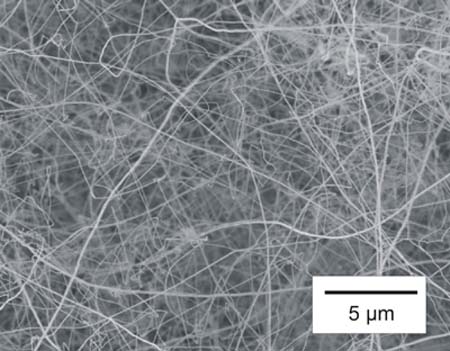Oligophenylene vanillin nano wires section
" Oligophenylene vanillin " nanowires, investigation of structure and functions
Researcher and author: Dr. ( Afshin Rashid)
Note: These types of nanowires, as their name suggests, are obtained from organic compounds. In addition to metallic and semi-conducting materials, it is also possible to make nanowires from organic materials. Recently, a substance called "oligophenylene vinyline" has been considered for this purpose.
The characteristics of these wires (such as conductivity, resistance, and thermal conductivity) depend on the structure of the monomer and its arrangement. Another nanostructure that has received many studies and researches today is nanowires. In general, the wire is said to be a structure that is extended in one direction (longitudinal direction) and is very limited in the other two directions. A basic feature of these structures that have two outputs is electrical conductivity. By applying the electric potential difference at the two ends of these structures and along their length, electric charge transfer occurs. Making wires in nanometer dimensions is very interesting both from a technological and scientific point of view, because in nanometer dimensions they show unusual properties. The ratio of length to diameter of nanowires is very high.
From the physical properties of Oligophenylene vanillin nanowires, we can mention their electrical, photoelectric and mechanical properties. Nanowires ( SiNWs) have high mobility and surface-to-volume ratio, which makes them easy to control using a weak electric field. These one-dimensional nanostructures are created from nanowires with a diameter in the range of nanometers and a length of more than a micrometer. It has been done in the manufacture of nanowires through regular one-dimensional arrays with the help of different physical and chemical methods. Methods such as the use of electron beam or lithography method, heavy ion irradiation, laser, chemical and electrochemical methods. Such as water heat and the methods of spontaneous accumulation that are used to make the membranes of the molds can also be used . In the fabrication of one-dimensional nanostructures such as Oligophenylene vanillin nanowires by electro-accumulation method, there are three general steps: firstly, the creation of a porous template as a suitable substrate and framework for the accumulation of nanowires, secondly, the growth of nanowires along the cavities The mold and the third is removing the mold and separating the nanowires from it. The properties of the nanowires are directly dependent on the features of the mold surface such as the size distribution of the holes, the density of the holes and the superiority of the surface of the nano holes. In order to control the properties of Oligophenylene vanillin nanowires, parameters that are effective in the formation and optimization of the diameter of the holes and the thickness of the mold should be considered.
Conclusion :
This type of nanowires, as their name suggests, are obtained from organic compounds. In addition to metallic and semi-conducting materials, it is also possible to make nanowires from organic materials. Recently, a substance called "oligophenylene vinyline" has been considered for this purpose.
Researcher and author: Dr. ( Afshin Rashid)
Specialized doctorate in nano-microelectronics




